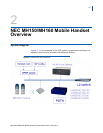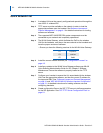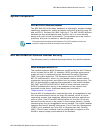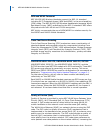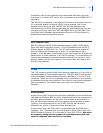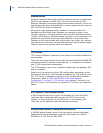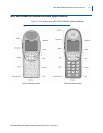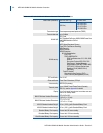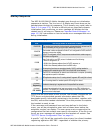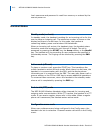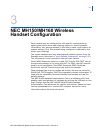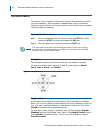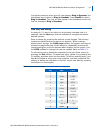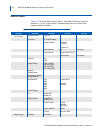
NEC MH150/MH160 Mobile Handset Overview 2-9
NEC MH150/MH160 Mobile Handset Administration Guide - Revision 2
Startup Sequence
The NEC MH150/MH160 Mobile Handset goes through an initialization
sequence at startup. The line icons 1-9 display and count down as the
handset steps through this sequence. This is usually very rapid (refer to
Table 2-2 on page 2-9). If there is difficulty at any step that prevents
initialization from continuing, an error message will display and the
related icon(s)
will stay on. Please see “Handset Status Messages” on
page 12-2 for instructions on how to handle error messages that occur
during initialization.
Table 2-2 Startup sequence display
Icon The icon(s) shown in bold turns off when:
123456789
The handset has located and authenticated and associated with at least one AP,
and is proceeding to bring up higher-layer networking functions.
12345678
The handset is either configured for Static IP, or if configured for DHCP, the DHCP
discovery process has started.
1234567
If DHCP is configured, a DHCP response was received which contains a good
DNS server configuration.
123456
Note: Only valid on non-SRP protocol. Indicates one of the following:
• Static IP configuration, or
• WLAN Voice Gateway address found in DHCP response, or
• WLAN Voice Gateway address found via DNS lookup.
12345
All networking functions are complete (notably, DHCP), and the handset is
proceeding with establishing the SRP link to the WLAN Voice Gateway.
1234
The SRP link is established; all network stack initialization is complete, proceeding
with application-specific initialization.
123 SIP application startup. Icon 3 is extinguished if a generic SIP config file is found.
12
Icon 2 is extinguished if a handset specific SIP config file is found.
(no icons)
Registering
Handset is attempting to register each of the specified line contacts.
(no icons)
EXT
. XXXXX
Handset has registered with at least one
contact on one PBX. Initialization is
complete. The handset is in standby mode ready to receive and place calls. The
line one contact is displayed.
During the last three steps
of this process, the handset contacts the SIP
TFTP server and downloads general information about the PBX,
downloads specific information pertaining to the handset, registers with
the PBX, and verifies handset credentials. Once this process is complete,
the handset is ready to use.
If the username and password have
not been defined in the Admin
menu, you will be prompted to enter both of these items before the
extension number can display. The user name must correspond to the
configuration file that contains user-specific information. If the file is not
found, an error message will appear and the handset will restart. See
“SIP TFTP Server Configuration Files” on page 6-1.
A specific “.cfg” file will be required f
or the primary line of each handset
registering against an NEC PBX - regardless of whether the primary



